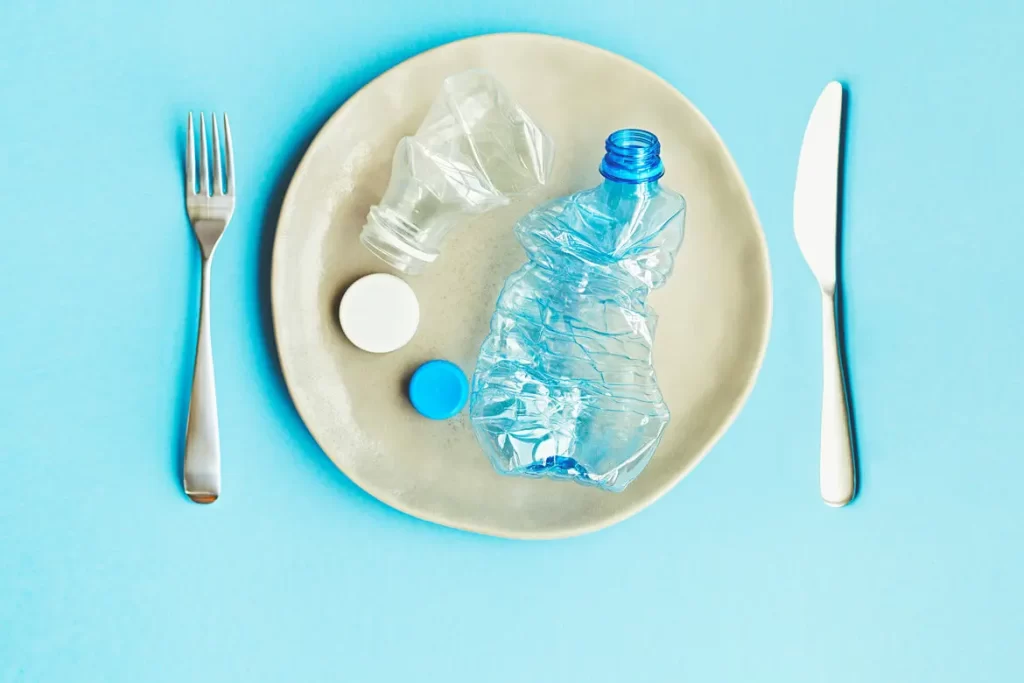Should You Be Worried About Microplastics in Your Food?

What are microplastics?
Microplastics are extremely small pieces of plastic debris that can measure up to 5mm in length. Which is about the size of a sesame seed. However, most microplastics found are more commonly on the nanoscale, reaching < 1 micrometer (0.001mm) in size. For comparison, the thickness of a single sheet of paper is 0.05mm.
How are microplastics formed?
Generally, microplastics are the product of the whittling of larger plastic items in the environment such as discarded household rubbish, industrial discharge, or litter discarded into rivers. These larger plastic items are broken down into microplastics due to heat, oxidation, light and microorganisms. The rate and extent of the degradation of plastic varies depending on the environmental variables present. Microplastics also come in a smaller form called microbeads. Which are commonly used in cosmetic products, such as facial washes and toothpastes.
Microplastics can be found in your food
Due to the fact that microplastics are more common in seawater because of littering and industrial waste, microplastic contamination is more common in seafood, particularly in shellfish. Mussels and oysters are at a much higher risk. This is because of the higher concentration of plastic in the water near the shore, which is where most oysters and mussels are found.
Microplastics are also present in other food and drinks we consume, such as sea salt, honey and beer. A recent study tested 15 brands of sea salt for microplastic contamination and discovered 600 microplastic particles per kg of salt while other studies found 660 microplastic fibres per kg of honey and 109 fragments per litre of beer. A pilot study conducted by researchers from the Medical University of Vienna discovered microplastics in the stool samples of 100% of the volunteers tested. While it was a small sample of just 8 individuals, the fact. That they were spread across Asia and Europe indicates the global impact of the problem. The diet of the volunteers included liquids from plastic bottles and seafood.
Because microplastics originate from everyday plastic items all around the world, it is challenging to determine the exact sources of these microplastic particles found in such foods.
Should you worry?
Because microplastics are able to absorb and release different types of chemical compounds. We should be concerned about what that means for our health. To date, few studies have done on humans to determine how microplastics affect human health. It is speculate. That the amount of microplastics that enter your body small and will simply pass through your digestive tract. It remains known exactly how many plastics we consume big enough to be causing us harm.
What you can do to avoid microplastic-contaminated food
Although the effects of microplastics on human health are unclear. It is still wise to limit intake of food and beverages. Where microplastics commonly found. Start by doing what is within your control. Consider limiting the use of plastic utensils and food packaging. Opt for glass bottles and metal or wooden utensils rather than plastic, and for paper-wrapped food rather than plastic wrapping, where possible.
Doing your best to limit the amount of เล่น UFABET ผ่านมือถือ สะดวกทุกที่ ทุกเวลา plastic introduced into the food chain is another way you can contribute. When shopping, make choices. Where plastic packaging is limit so you are throwing less away. If it is not yet a common practice in your country, and to avoid buying cosmetic cleanser. That contain microplastic beads.